Centre Tours The Harvard Campus And Around Boston
Uncle Charlie was asked how the reception given the Kentuckians thus far compared to the attention given during the 1920 visit. A reporter quoted him as saying it was like a landlord who awakened his quests every half hour to make certain they were enjoying themselves, and, Southern hospitality is set a very hot pace by Bostonians.
After the skull session in the Lenox dining room, the team left in two buses of the Royal Blue Line and headed toward Cambridge. The football players, Uncle Charlie, Chief Myers and his wife, Tiny Thornhill, trainer Carl "Swede" Anderson, and manager Johnny McGee were in the vehicles.
The Chief had instructed the drivers to journey along the Charles and cross over to the Harvard campus, the big Harvard Stadium on their left, and as they turned right they crossed the ( Larz ) Anderson Memorial Bridge.
Several new team members hadn't had the opportunity to experience the campus itself. The Centre coaching staff felt it was important for all of the team, even those who had been along in 1920, to "feel" the magnificence and beauty of the greatest university in the country, to be able to appreciate how important Harvard was, and how huge a victory would be when winning against a team representing the best that America had to offer.
Bo and Army wanted the team to see the Hemenway Gymnasium where their basketball exploits had taken place earlier in the year, so the buses drove up Massachusetts Avenue, past the red brick athletic building.
"That's where we beat a good Harvard team," Army said. "Let's make it two for two for 1921."
The buses turned back toward Harvard Square and drove onto Peabody Street, parking so the occupants could disembark.
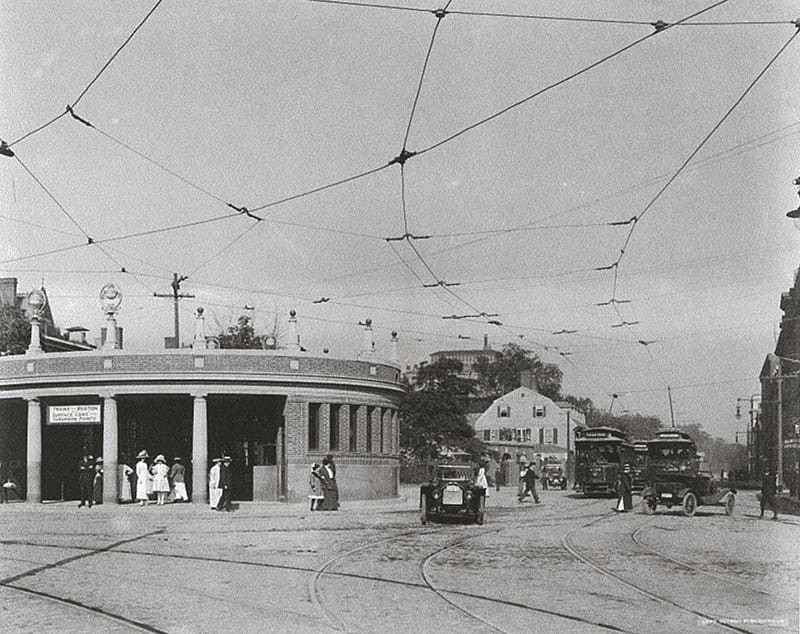
Harvard Square
The campus was entered by walking through the Johnson Gate, constructed in 1890.

Johnson Gate- 1890
On the left was Harvard Hall, built in 1766, and on their right, the even older Massachusetts Hall, circa 1720.
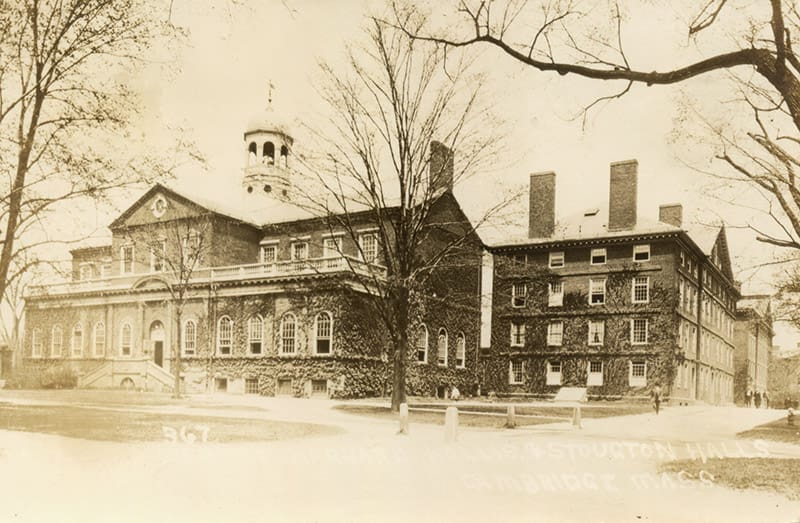
Harvard Hall- 1766
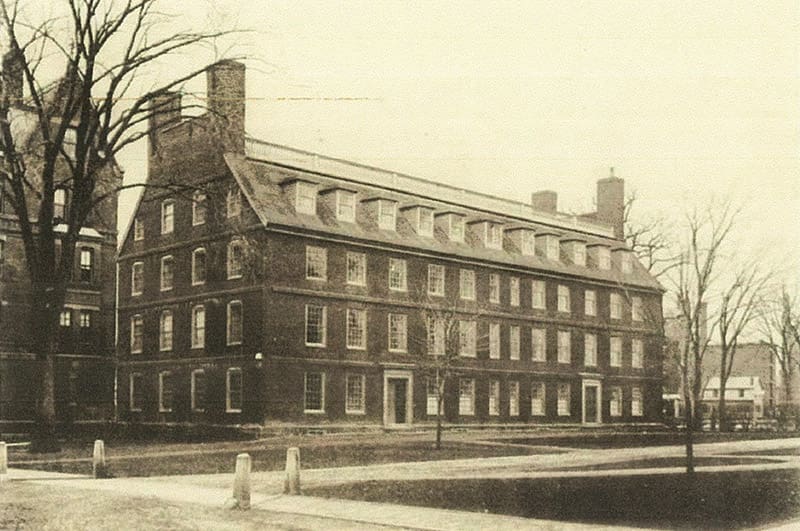
Massachusetts Hall- 1720
The Chief had a map and pointed out the buildings which fronted the Old Yard.
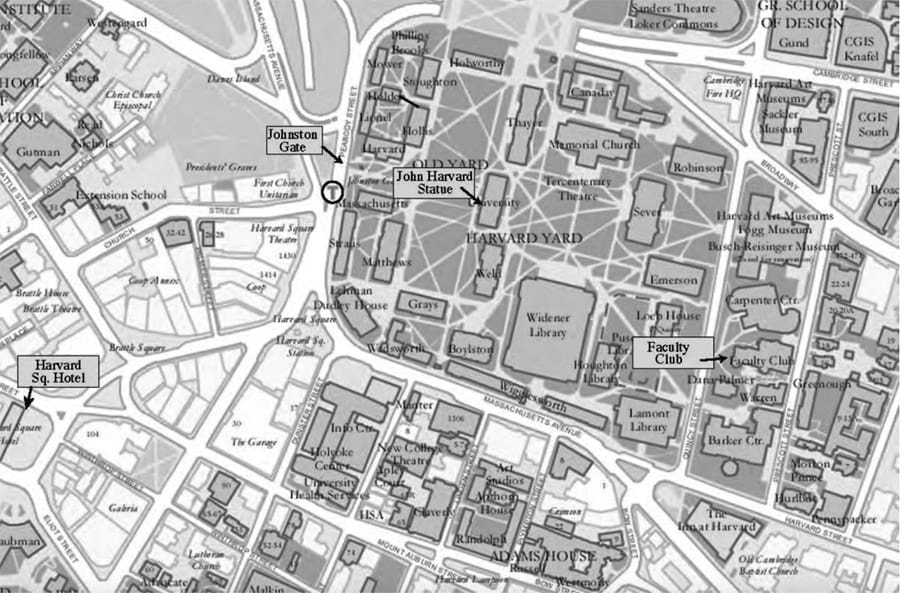
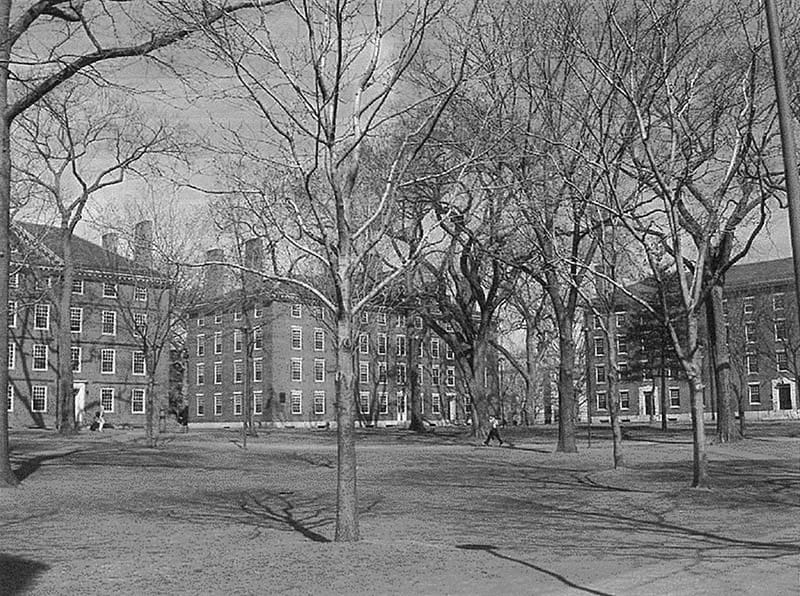
The Old Yard on Harvard Campus
The group turned left in front of, "Hollis Hall, 1763.
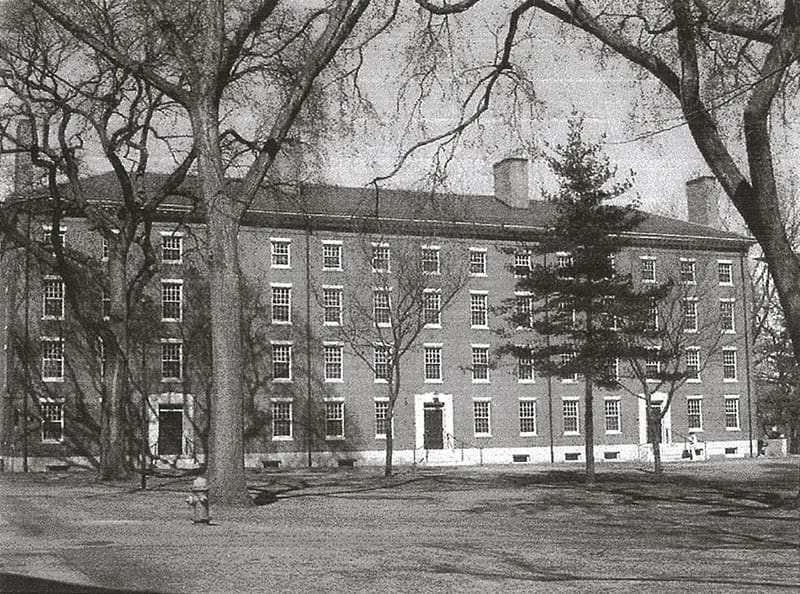
Hollis Hall - 1763
"Stoughton Hall, 1805."

Stoughton Hall- 1805
"Holworthy Hall, 1812. Thayer Hall, 1870."
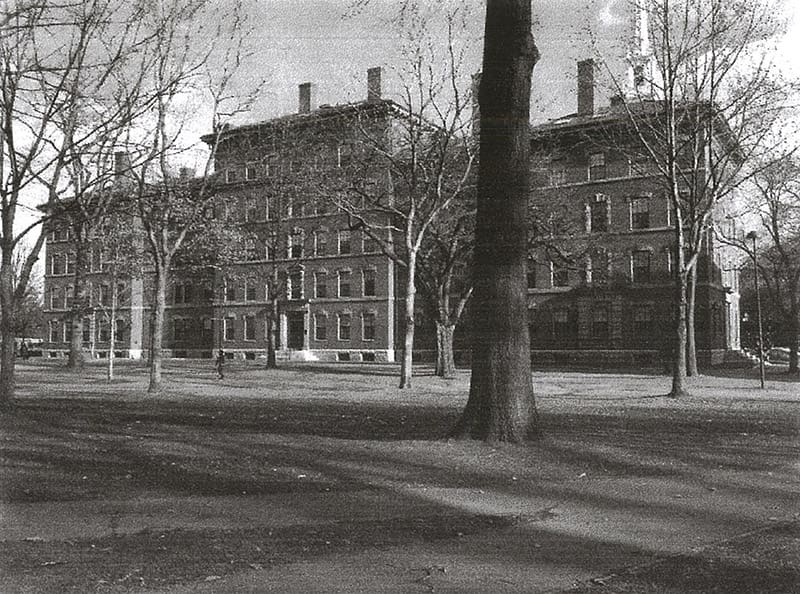
Thayer Hall- 1870
"Chief, that's not as old as our Old Centre," said one of the players.
They continued in the Old Yard past the statue of John Harvard and passed into Harvard Yard.

John Harvard, a founder of Harvard who donated his library and half of his estate upon his death
As they entered Harvard Yard, they saw the massive Widener Library, "built just a few years ago, in 1915."
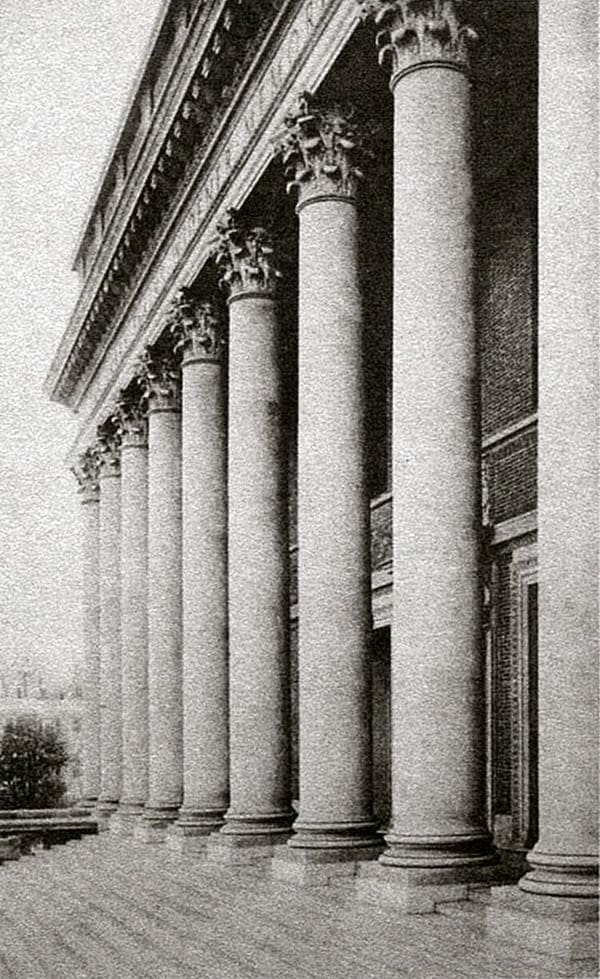
Widener Library- 1915
By the time the team was reaching the library, they were beginning to draw attention from students who were walking around the Yard.
Several came up and told various team members that they would be at the game tomorrow, "as will everybody," and wished them luck.
"These are just a few of the buildings that make up the campus," the Chief said as the group sat on the steps of the library.
"Harvard dates back to 1636. Massachusetts was founded only a few years earlier, when the Pilgrims landed at Plymouth Rock in 1620. Education was important, and I have always found it to be remarkable that only 16 years after the landing, it was seen as necessary to establish an institution of higher learning."
The Chief continued.
"Centre was founded early in the history of Kentucky. Harvard has a magnificence heritage. You too, come from an school with a wonderful heritage, on a lesser scale. It is only fitting that these two colleges, so beloved by their students and alumni alike, should meet on the field of battle, at Harvard Stadium on Soldiers Field, and engage in a game as only true sportsmen can play."
It was Harvard. Again, it was always-Harvard.
After leaving Cambridge, the two buses slowly eased back into Boston and wound through the city. The coaches wanted to find some remote spot where the team could spend the rest of the day, away from the hustle and bustle of the city.
They went east toward the coast and then headed north, out of the city limits, hugging the shore, and crossed over the Saugus River into Essex County and Lynn. After driving eastward through Lynn, they turned south down Nahant Road and traversed the narrow strip of land which connected the mainland with the resort city of Nahant, situated on a rocky coast jutting out into Massachusetts Bay and the Atlantic.
The buses stopped at Willow Road and the team disembarked near the Hotel Tudor and spent some time walking around the area admiring the summer homes, now mostly closed until the following spring.
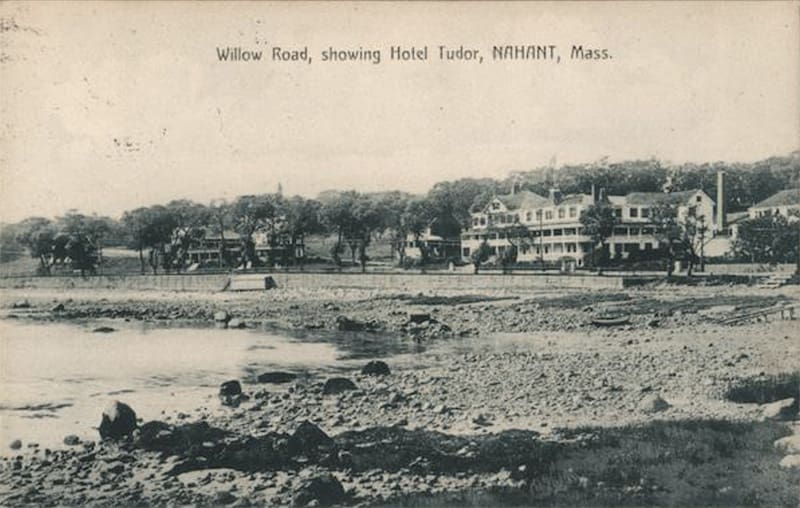
Disembarkation site
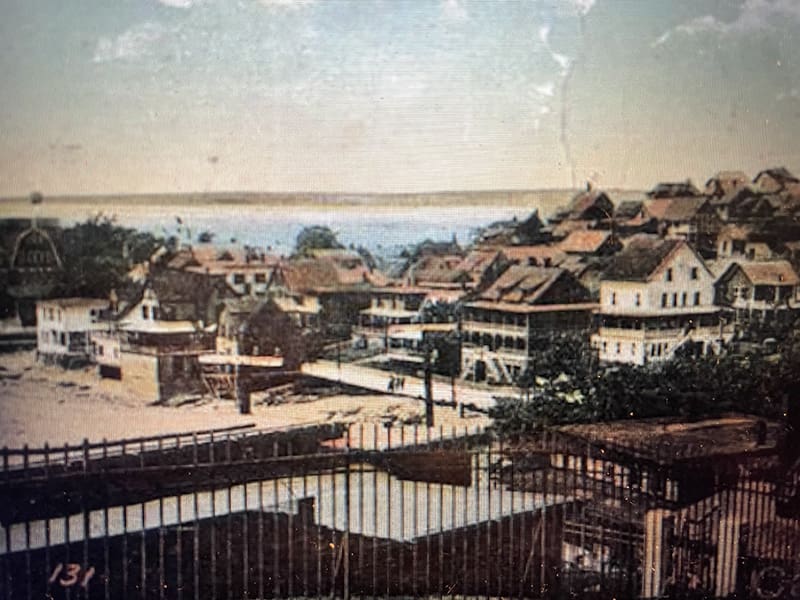
A place for contemplation
It was a quiet group, the members of the squad walking alone or in twos and threes, each player lost in his own thoughts as to how he would meet the challenge, now less than 24 hours away, in Harvard Stadium. It was late afternoon before the buses pulled back out of Nahant and began the 15-mile journey back to the Lenox.
